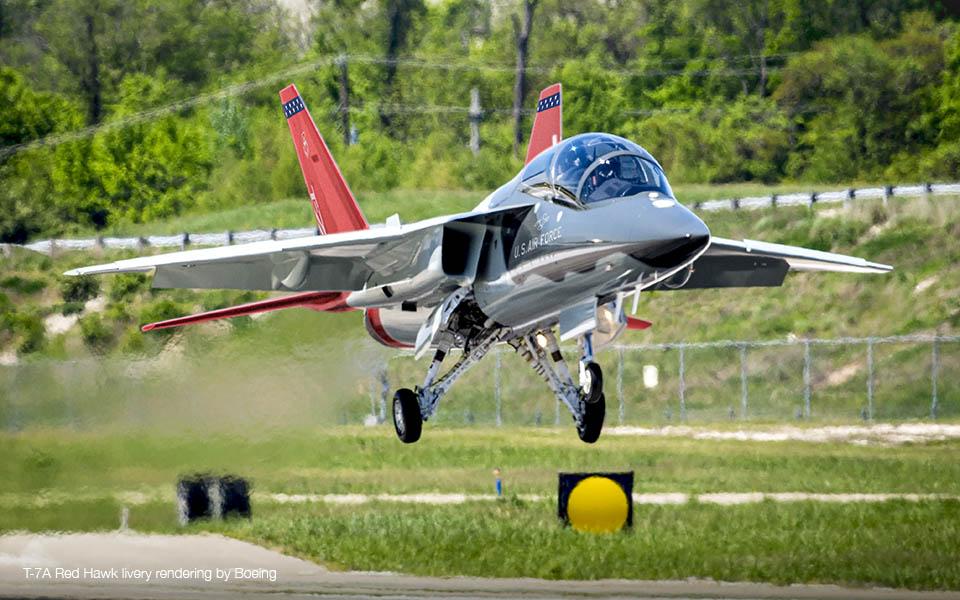
Boeing has released a statement saying that a newly revealed schedule delay for the T-7A program is less than half the period shown in U.S. Air Force budget documents and a software fix for an aerodynamic stability issue could be installed as soon as June 18.
The statement released late on June 17 adds critical details to the initial reports based on the Congressional testimony a day earlier by Gen. Charles Brown, Air Force chief of staff, and a follow-up statement by the Air Force press desk.
In testimony to the House Armed Services Committee, Brown said the Milestone C event—which authorizes production—for the T-7A had slipped to fiscal 2023 due to unspecified “technical issues,” causing a $17 million cut to projected spending on the program in fiscal 2022. Shortly afterward, the Air Force press desk elaborated that the technical issues include a wing rock problem and COVID-related supplier delays and parts shortages.
In response, Boeing said a software fix to resolve the wing rock problem was being loaded on June 17 into the two company-owned test aircraft. A first flight of the new software, which also would kick-off Phase II flight testing, could begin as soon as June 18. “We will be doing work-ups to validate [the fix] into July,” a Boeing spokeswoman said. Most importantly, the fix does not require any design changes to the aircraft, she added.
The time period of the delay to the Milestone C event is muddled by a confusing series of contradictory documents and statements.
A review of the Air Force’s annual budget justification documents, also known as “J-books,” suggest the T-7A has fallen 15-18 months behind schedule. The latest J-book published in May 2021 shows that Milestone C for the T-7A is now scheduled in the fourth quarter of fiscal 2023. That represents a 15-18 month delay compared to the previous J-book published in February 2020, which placed the scheduled Milestone C event in the third quarter of fiscal 2022. The window between the beginning of the third quarter of fiscal 2022 and the end of fourth quarter of fiscal 2023 is 18 months.
Boeing, however, says the internal schedule maintained by the program office shows the company is only behind schedule by seven months due to COVID-related supplier delays. According to Boeing, the wing rock problem did not contribute to the overall delay, as the software fix required no design changes.
Boeing’s explanation only makes sense if schedules shown in the Air Force’s annual J-books are out-dated and showing a placeholder schedule that was set before a contract was awarded. The version of the J-books published in February 2018 appears to support this possibility. It shows Milestone C in the third quarter of fiscal 2022, which is identical to last year’s version of the T-7A program schedule.
The February 2018 version of the J-book was published nearly eight months before the Air Force awarded the contract to Boeing, so the schedule at that time likely reflected a placeholder until detailed negotiations with the winner of the T-X competition could begin.
The Air Force press desk, however, released a follow-up statement on June 17 with a completely different timetable for the delay. Instead of showing either a seven-month delay, as Boeing claims, or a 15-18-month setback, as the budget justification documents may indicate, the press desk’s latest statement says that Boeing has fallen nine months behind schedule on the T-7A.
“The most recent MS-C estimate was for Q1 FY23, which is now 4Q FY23,” an Air Force spokesman said. “So technically [we’re] looking at a nine-month delay.”
The statement suggests that the Air Force expected Milestone C to occur at the beginning of the first quarter. Boeing’s timetable indicates the company believed it would happen in the final month of the first quarter.






Comments